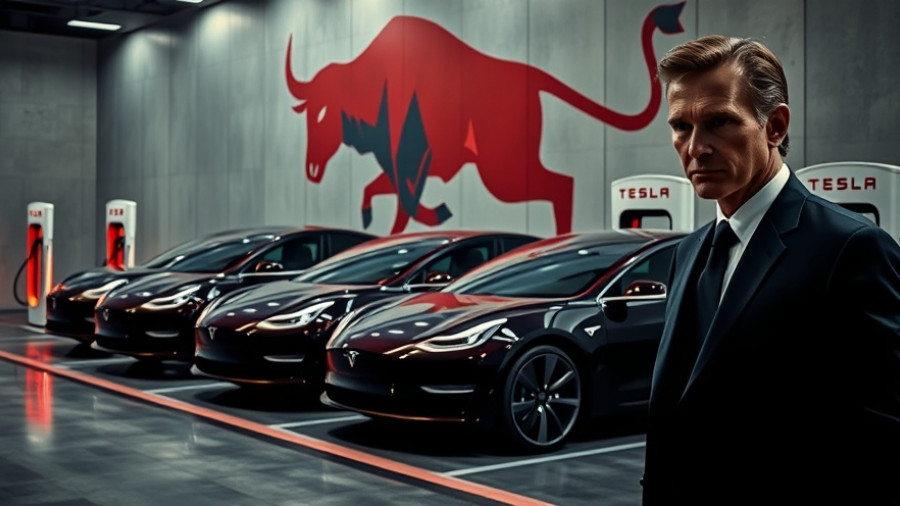
Record Sales, Disappointing Profits: What It Means for Investors
In the latest financial quarter, Tesla showcased its prowess, posting record revenues of $28.1 billion, propelled by a rush of U.S. buyers eager to capitalize on expiring tax credits. However, Elon Musk's electric vehicle empire falters in profit margins, reflecting rising costs and dwindling regulatory credits, leaving investors feeling disillusioned. The profit dipped a staggering 37%, slipping to $1.4 billion from $2.2 billion a year prior, despite higher sales volumes. These mixed signals underscore an uncertain future as Tesla navigates a complex financial landscape influenced by U.S. political pressures and evolving consumer dynamics.
The Impact of Tax Credits and Regulations on EV Sales
As the political landscape shifts, so too do the fortunes of electric vehicle manufacturers like Tesla. The recent abolishment of certain EV tax credits under the Trump administration has been cited as a key factor in the company's declining profit. Historically, regulatory credits have buoyed Tesla’s profits, but the current legislative environment is fostering a more challenging atmosphere. Analysts indicate that demand for Tesla's vehicles—and those of its competitors—may dwindle as these incentives fade, emphasizing the importance for consumers and investors alike to stay updated on governmental policies that dictate the EV market.
Emerging Competition: Risks and Opportunities
With Tesla's lowered prices on models like the Model Y and Model 3, the company's strategy aims to stimulate demand amid rising competition, particularly from more affordable imports. It's a bold move that may attract more buyers, but it also places pressure on profit margins. Analysts express concern that while volume sales are crucial, the recent price cuts could hinder overall financial health. As newer companies enter the EV space, the consumer choices widen, which could dilute Tesla's market share if it fails to sustain its technological edge. In Kansas City, local businesses must observe these industry shifts as opportunities arise in partnership with or competition against EV manufacturers.
Long-Term Growth and Innovation: The Future of Tesla
Musk's roadmap for Tesla remains ambitious, as the company prepares to roll out its Cybercab robotaxi service and ramp up production of its Semi truck and Megapack batteries by 2026. However, the transition may not be smooth. The company reported experiencing rising operational costs, suggesting that investing heavily in AI and robotics might delay nearer-term profitability. Local businesses should take note of potential job creation opportunities associated with these innovations to adapt their strategies for attracting a tech-savvy consumer base.
The Investor Perspective: Managing Expectations
As Musk navigates the tumultuous terrain of shareholder expectations—particularly with the impending vote on his $1 trillion pay package—investors may need to recalibrate their expectations. With two advisory firms recommending against this package amid declining profits, shareholder confidence may waver. The focus on Tesla's ability to generate continuing value highlights the need for investors to stay informed and adaptable, considering both short- and long-term implications of their investments.
Conclusion: Keeping Kansas City in the Loop
The unfolding developments with Tesla represent significant shifts not just in the EV market, but also in broader contexts of U.S. politics and consumer behavior. As Kansas City locals look to engage with these changes—be it through partnerships, investments, or simply as consumers—the importance of understanding the intricacies behind such corporate maneuvers is vital. Have a story to share or want to contact us for more details? Drop us an email at team@kansascitythrive.com.
 Add Row
Add Row  Add
Add 





Write A Comment